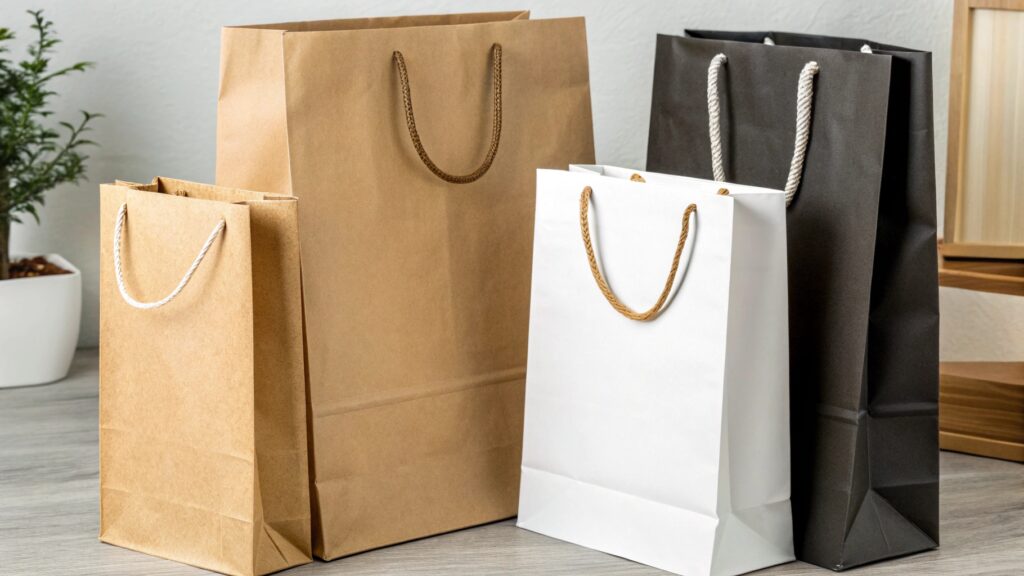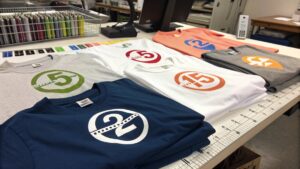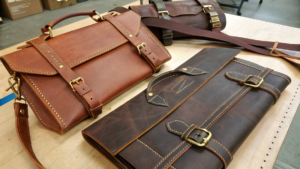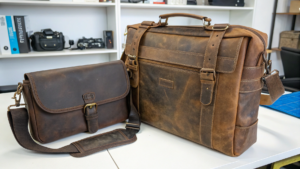What Are The Different Types of Paper Bags?
Are you wondering about paper bags? Many people think all paper bags are the same. But there is a lot to know about them.
Paper bags come in many types, each with unique features and uses. Common types include kraft paper bags, coated paper bags, and laminated bags, with various handle styles like twisted or die-cut. The choice depends on a brand's needs, from sustainability to luxury appeal.

At first glance, paper bags may seem like a simple product. But if you look closer, you will see they connect to big ideas. These include how we care for the earth, what people think, and a brand's image. I have found that paper bags are not just for carrying things. They are a quiet but strong way for a brand to show its true self.
What Type of Paper is Used for Paper Bags?
Do you ever wonder what makes a paper bag strong or smooth? The type of paper used changes everything. It impacts how the bag looks and feels.
Paper bags use different types of paper like kraft paper1, coated paper, and specialty papers. Kraft paper is known for its strength and natural look. Coated paper offers a smooth surface for printing. The choice of paper depends on the bag's purpose, desired appearance, and strength needs.

When I started in the printing business, I quickly learned that the paper makes a huge difference. A paper bag is not just paper; it is a blend of purpose and design. The kind of paper chosen speaks volumes about a brand. It shows what they value and what they want you to feel. I have seen how the right paper can make a simple bag feel special. It turns a quick buy into a memorable experience.
Common Papers for Paper Bags
The paper type tells a story about the brand. Here are some common types:
- Kraft Paper: This paper is strong and comes in natural brown or bleached white. It is known for its durability and eco-friendly feel. Many organic shops use it. This paper shows a brand cares about the environment.
- Coated Paper: This paper has a smooth, often glossy, surface. It is great for bright colors and sharp images. Luxury stores often use this. It helps to make products look high-end.
- Laminated Paper: This paper has a thin plastic film on it. This makes the bag stronger and water-resistant. It gives a very polished and durable feel. It is often used for higher-end items or items that need more protection.
- Recycled Paper: This paper is made from old paper products. It is a good choice for brands that want to show their commitment to sustainability. It can vary in look and strength based on the recycling process.
- Specialty Paper: This includes papers with textures, unique finishes, or added fibers. These papers give a premium feel. They are often used for very specific branding goals, like adding a touch of luxury or uniqueness.
| Paper Type | Key Characteristics | Common Uses | Brand Message Conveyed |
|---|---|---|---|
| Kraft Paper | Strong, natural, often brown or white, recyclable. | Grocery stores, eco-friendly brands, casual retail. | Sustainability, natural, earthy, simple, authentic. |
| Coated Paper | Smooth, glossy or matte finish, excellent for printing. | Luxury boutiques, cosmetic brands, high-end gifts. | Premium quality, sophistication, vibrant, professional. |
| Laminated Paper | Durable, water-resistant, often glossy or matte finish. | Electronics, jewelry, high-value retail items. | Durability, luxury, protection, high-end experience. |
| Recycled Paper | Eco-friendly, varies in texture and color, sustainable. | Eco-conscious brands, bookstores, craft stores. | Environmental responsibility, ethical, community-minded. |
| Specialty Paper | Unique textures, colors, or added fibers. | Bespoke gifts, niche luxury, exclusive promotions. | Exclusivity, artistry, attention to detail, unique. |
What are the Different Types of Woven Bags?
Are you confused about "woven bags" when you are talking about paper bags? It's a common question. Woven bags are often not made of paper at all.
Woven bags are typically made from plastic materials like polypropylene (PP) or natural fibers. These are different from paper bags. They are known for their extreme strength and durability, often used for bulk goods, agriculture, or heavy-duty packaging. While some natural fiber woven bags can be paper-like, traditional paper bags are not woven.

When I discuss paper bags, the term "woven bags" sometimes comes up. It's important to clarify that woven bags are usually a different product entirely. Most woven bags are made from materials like polypropylene, which is a type of plastic. These bags are very strong. They are used for things like rice, fertilizer, or cement. They are built for heavy loads and rough handling. They are not like the paper bags you get at a store. I have seen how these bags serve a very specific, heavy-duty purpose that paper simply cannot match. They exist in a different part of the packaging world.
Understanding Woven Bags vs. Paper Bags
It's helpful to see the clear differences between them.
- Material: Woven bags are often made from polypropylene strips that are woven together. This creates a fabric-like material. Paper bags are made from pressed wood pulp. They are solid sheets of paper.
- Strength and Durability: Woven bags are much stronger and more tear-resistant than paper bags. They can hold very heavy and abrasive items. Paper bags, while strong for their purpose, are not designed for such heavy or rough use.
- Uses: Woven bags are used for industrial purposes. Think of bags for grains, chemicals, or building materials. Paper bags are used for retail, food service, and gifts.
- Look and Feel: Woven bags have a distinct woven texture. They are usually more rigid. Paper bags are smooth or slightly textured, and often more flexible.
- Environmental Impact: Both can have environmental considerations. Woven PP bags are plastic and may be reusable. Paper bags are often recyclable and biodegradable.
| Feature | Woven Bags (e.g., PP Woven) | Paper Bags |
|---|---|---|
| Primary Material | Polypropylene (PP) strips, woven together. | Wood pulp (kraft, coated, recycled paper2). |
| Strength & Durability | Extremely high tear strength, water-resistant (if laminated). | Varies by paper type, generally less tear-resistant than woven bags. |
| Typical Use Cases | Agriculture (rice, grains), construction (cement), bulk goods. | Retail shopping, food service, gifts, light to medium goods. |
| Appearance/Texture | Fabric-like, visible weave pattern, often rougher. | Smooth, sometimes textured, solid sheet appearance. |
| Printability | Good for simple graphics, often flexographic printing. | Excellent for detailed graphics, high-quality printing. |
| Eco-considerations | Reusable, but generally plastic. | Often recyclable and biodegradable. |
What are Commercial Paper Bags Made Of?
Are you curious about the materials in the commercial paper bags you see every day? It is more than just plain paper. They are built for purpose.
Commercial paper bags are primarily made from various types of paper, including kraft paper (brown or white), coated paper3, and recycled paper. Beyond the paper itself, they often include elements like starch-based glues, water-based inks, and handles made from twisted paper, flat paper, or cotton cord for durability and branding.

From my years in this industry, I have seen that a commercial paper bag is a carefully designed product. It is made to be strong enough for shopping but also good for printing. The main part is paper. But it is not just any paper. It is picked to fit the bag's use. For example, a heavy grocery bag needs thick, strong kraft paper. A fancy boutique bag will use smooth, coated paper. The glues are also important. They must hold the bag together without breaking. And the handles must be strong enough to carry the weight. Every part is chosen for a reason.
Components of a Commercial Paper Bag
Each part of a commercial paper bag plays a role.
- Paper Stock: This is the main body of the bag. As I said before, it can be kraft paper (brown or white), coated paper, or recycled paper. The thickness of the paper (measured in GSM) impacts how strong the bag is. Thicker paper means a stronger bag.
- Adhesives (Glues): These are used to hold the bag's seams and attach the handles. Most modern commercial paper bags use water-based or starch-based glues. These glues are strong and also safe for the environment. They do not add harmful chemicals.
- Inks: If the bag has a logo or design, it uses ink. Many commercial bags use water-based inks. These inks dry quickly and are more eco-friendly than solvent-based inks. They allow for clear, vibrant printing.
- Handles: Handles come in different styles and materials.
- Twisted Paper Handles: These are common. They are strong and give a natural look.
- Flat Paper Handles: These are flat strips of paper. They are often used for smaller or lighter bags.
- Cotton or Rope Handles: These are used for more premium bags. They add a touch of luxury and comfort.
- Die-Cut Handles: These are holes cut into the top of the bag. They are good for a minimalist look.
- Reinforcements: Some bags have extra paper patches inside the top or near the handles. These patches make the bag stronger, especially when carrying heavy items.
| Component | Material Used | Purpose in Bag Construction | Key Benefit |
|---|---|---|---|
| Paper Stock | Kraft paper (virgin or recycled), coated paper. | Forms the main body and structural integrity of the bag. | Determines strength, appearance, and eco-friendliness. |
| Adhesives | Starch-based or water-based glues. | Binds seams, bottoms, and handles securely. | Ensures bag integrity and can be eco-friendly. |
| Inks | Water-based, soy-based, or UV-curable inks. | Applies branding, logos, and decorative designs. | Provides visual appeal, branding, and can be low-VOC. |
| Handles | Twisted paper, flat paper, cotton cord, plastic (less common). | Provides a carrying mechanism for the user. | Adds comfort, durability, and contributes to bag aesthetics. |
| Reinforcements | Extra paper patches (often inside handle area). | Adds strength and prevents tearing at stress points. | Increases bag's load-bearing capacity and longevity. |
Conclusion
Paper bags are diverse, ranging from strong kraft to elegant coated types. Their design, materials, and handles are chosen to match a brand's message. They are a strategic choice for businesses today.
-
Explore the advantages of kraft paper, known for its strength and eco-friendliness, making it a popular choice for sustainable packaging. ↩
-
Discover how recycled paper supports sustainability and reduces waste, making it a responsible choice for eco-conscious brands. ↩
-
Learn about coated paper's smooth finish and vibrant printing capabilities, ideal for luxury packaging and branding. ↩





